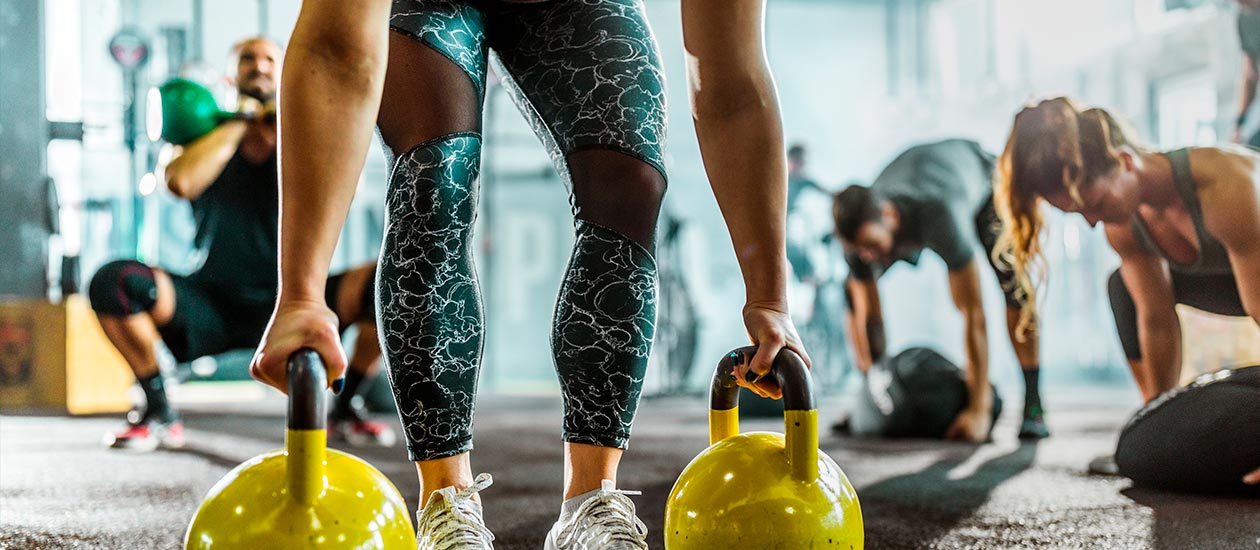Hypoxia training has emerged as an innovative strategy within the world of fitness and physical preparation, attracting the attention of athletes, coaches, and amateurs alike.
The premise is simple: subject the body to conditions of low oxygen availability to stimulate physiological adaptations that enhance athletic performance. But what are the real benefits of this approach?
Definition and basic principles of hypoxia
Hypoxia is a medical term referring to a situation in which the tissues of the human body receive an insufficient amount of oxygen. This condition can be caused by various factors, such as high altitude, lung diseases, heart problems, obstruction of the airways, among others.
Hypoxia can be acute, as in the case of a person drowning and experiencing a rapid reduction in the supply of oxygen, or chronic, when it occurs gradually over time, as in the case of people living in high-altitude areas.
In the context of hypoxia training, a low oxygen concentration situation is artificially induced to stimulate physiological adaptations in the body. This is achieved by using devices such as training masks or hypoxia chambers. By exposing the body to these challenging conditions, a series of adaptive responses are activated that can enhance sports performance.
The basic principles of hypoxia are based on the human body’s ability to adapt and survive in environments with low oxygen levels. When the supply of oxygen is reduced, the body responds by increasing the production of red blood cells to transport more oxygen to the tissues, as well as stimulating the formation of new blood vessels to improve circulation. Additionally, cellular mechanisms are activated that improve the cells’ ability to use the available oxygen more efficiently.

Benefits of hypoxia training for sports performance
The contributions of this type of training are diverse and encompass both physical and physiological aspects. Some of the most significant advantages that this type of training can offer to athletes include:
- Improvement in aerobic capacity: Hypoxic training stimulates physiological adaptations that enhance the body’s ability to utilise oxygen during exercise. This translates into improved efficiency of the cardiorespiratory systems and greater aerobic endurance. Athletes who train in hypoxia often experience a reduction in heart rate and oxygen consumption during exercise. This allows for maintaining high-intensity efforts for longer periods.
- Increase in anaerobic capacity: Although hypoxic training is primarily associated with improvements in aerobic capacity, it also has benefits for anaerobic capacity. Intermittent hypoxia has been shown to increase lactate production and improve tolerance to the accumulation of lactic acid in the muscles. It helps athletes maintain intense efforts for longer before fatiguing.
- Optimisation of body composition: Hypoxic training has positive effects on body composition, especially regarding the reduction of body fat and the increase in lean muscle mass. This is partly because training under conditions of low oxygen availability increases the basal metabolic rate, resulting in a higher calorie burn both during exercise and at rest.
- Improvement in muscle recovery: It has been observed that hypoxic training accelerates muscle recovery after intense exercise. This is because hypoxia stimulates the production of growth factors and repair proteins in muscle tissues. This facilitates the repair and regeneration of muscle fibres damaged during training.
- Increase in red blood cell production: Intermittent exposure to hypoxia has been shown to increase the production of red blood cells in the body, improving the body’s ability to transport oxygen to tissues during exercise. This is particularly beneficial for athletes competing in endurance sports, where aerobic capacity is crucial for performance.

What about aerobic and anaerobic capacity?
Hypoxia training offers notable improvements in both aerobic and anaerobic capacity of athletes. In the aerobic domain, this type of training stimulates physiological adaptations that optimise the body’s efficiency in using oxygen during exercise. This translates into increased endurance and the ability to sustain high-intensity efforts for extended periods, which is especially beneficial for endurance sports.
On the other hand, in terms of anaerobic capacity, intermittent hypoxia has been observed to increase lactate production and improve tolerance to lactic acid accumulation in the muscles. It serves athletes by allowing them to perform intense efforts for longer before fatiguing. This combination of aerobic and anaerobic adaptations contributes to an overall improvement in athletic performance. Athletes gain a significant competitive advantage across a wide range of athletic disciplines.
Acceleration of muscle recovery
Hypoxia training not only impacts performance during exercise but also offers notable benefits for post-workout muscle recovery. It has been observed that intermittent exposure to hypoxia stimulates the production of growth factors and repair proteins in muscle tissues. This production facilitates the repair and regeneration of muscle fibers damaged during intense physical activity.
Accelerated recovery process allows athletes to minimize downtime between training sessions. This benefit, in turn, enables them to train more frequently and with greater volume without the risk of overtraining or injuries. Moreover, the enhanced ability of the body to recover quickly from physical stress contributes to a reduction in the risk of chronic injuries. This decrease in risk leads to the maintenance of an optimal long-term muscle health state.
In addition to facilitating the repair of muscle tissues, hypoxia training also helps to reduce inflammation and muscle soreness associated with intense exercise. It has been suggested that exposure to hypoxia can modulate the body’s inflammatory response, reducing the release of certain pro-inflammatory cytokines and promoting the release of anti-inflammatory factors.
This results in a quicker and less painful recovery after exercise. In this way, athletes are allowed to return to training more promptly and maintain an optimal performance level over time. Altogether, these combined effects of accelerated muscle repair, inflammation reduction, and pain relief contribute to a significant improvement in athletes’ ability to recover effectively after intense exercise, enabling them to achieve their training goals more efficiently and consistently.
A cycling simulator can be a valuable tool for hypoxia training. Especially for cyclists looking to improve their performance at high altitudes or for those who wish to simulate these conditions without the need to travel to a specific location. BKOOL is one of the ways to simulate the altitude conditions of major climbs.
BKOOL is the most complete cycling simulator on the market, try it FREE for 7 days!
 Go to BKOOL
Go to BKOOL





